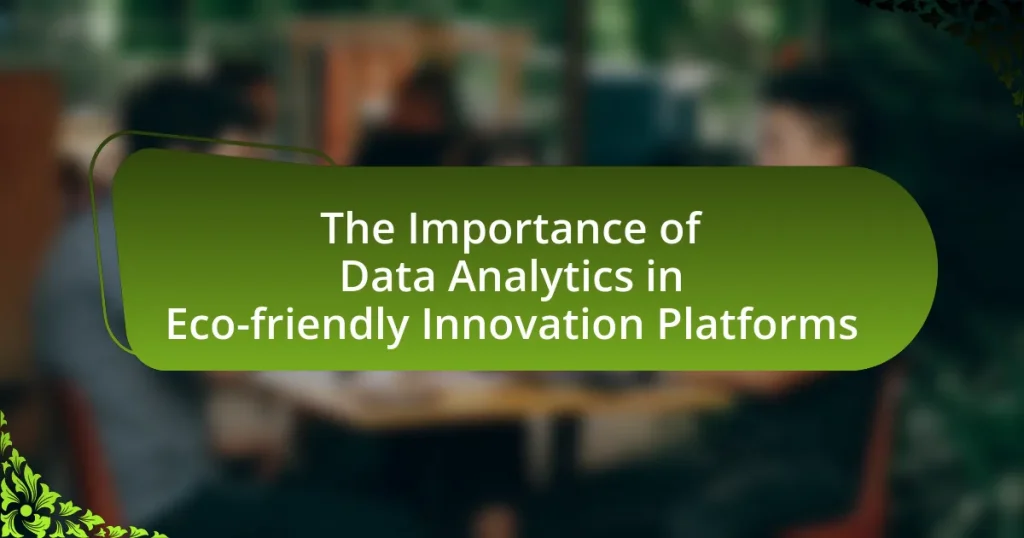Sustainability software solutions are digital tools that assist organizations in managing, tracking, and enhancing their environmental, social, and governance (ESG) performance. This article examines the effectiveness of these solutions by exploring their features, such as data tracking, carbon footprint analysis, and compliance management, which align with sustainability metrics. It highlights the importance of measuring effectiveness, the challenges organizations face, and the methodologies employed for assessment, including quantitative and qualitative metrics. Additionally, the article discusses the role of benchmarks, case studies, and best practices in evaluating the impact of sustainability software solutions on organizational performance and environmental goals.

What are Sustainability Software Solutions?
Sustainability software solutions are digital tools designed to help organizations manage, track, and improve their environmental, social, and governance (ESG) performance. These solutions enable businesses to collect data on their sustainability initiatives, analyze their impact, and report on progress towards sustainability goals. For instance, according to a report by Gartner, organizations using sustainability software can reduce their carbon footprint by up to 30% through better resource management and data-driven decision-making.
How do Sustainability Software Solutions contribute to environmental goals?
Sustainability software solutions contribute to environmental goals by enabling organizations to track, analyze, and optimize their resource usage and emissions. These solutions provide data-driven insights that help businesses identify inefficiencies and implement strategies to reduce their carbon footprint. For instance, a study by the Carbon Trust found that companies using sustainability software can reduce energy consumption by up to 20%, directly impacting greenhouse gas emissions. Additionally, these tools facilitate compliance with environmental regulations and support reporting on sustainability metrics, further aligning corporate practices with environmental objectives.
What features are essential in Sustainability Software Solutions?
Essential features in Sustainability Software Solutions include data tracking and reporting, carbon footprint analysis, compliance management, and stakeholder engagement tools. Data tracking and reporting enable organizations to monitor their sustainability metrics in real-time, facilitating informed decision-making. Carbon footprint analysis helps quantify emissions and identify reduction opportunities, which is crucial for meeting sustainability goals. Compliance management ensures adherence to environmental regulations and standards, reducing legal risks. Stakeholder engagement tools foster communication and collaboration among employees, customers, and partners, enhancing transparency and accountability in sustainability efforts. These features collectively support organizations in effectively measuring and improving their sustainability performance.
How do these features align with sustainability metrics?
The features of sustainability software solutions align with sustainability metrics by enabling precise tracking and reporting of environmental impact, resource usage, and compliance with regulations. These software solutions often include functionalities such as carbon footprint analysis, energy consumption monitoring, and waste management tracking, which directly correlate with established sustainability metrics like the Global Reporting Initiative (GRI) standards and the Carbon Disclosure Project (CDP) guidelines. For instance, a study by the World Resources Institute indicates that organizations utilizing such software can reduce their carbon emissions by up to 30% through improved data visibility and decision-making capabilities. This demonstrates that the integration of these features not only supports compliance with sustainability metrics but also drives measurable improvements in environmental performance.
Why is measuring the effectiveness of Sustainability Software Solutions important?
Measuring the effectiveness of Sustainability Software Solutions is important because it enables organizations to assess their environmental impact and optimize resource usage. By evaluating these solutions, companies can identify areas for improvement, ensure compliance with regulations, and enhance their sustainability strategies. For instance, a study by the Global Reporting Initiative found that organizations using sustainability software reported a 30% increase in efficiency and a 25% reduction in waste, demonstrating the tangible benefits of effective measurement.
What challenges do organizations face in measuring effectiveness?
Organizations face several challenges in measuring effectiveness, particularly in the context of sustainability software solutions. One primary challenge is the lack of standardized metrics, which makes it difficult to compare performance across different organizations or initiatives. Additionally, organizations often struggle with data collection and integration, as sustainability metrics may come from various sources and require significant effort to consolidate. Furthermore, the complexity of sustainability impacts, which can be both direct and indirect, complicates the assessment of effectiveness. Research indicates that 70% of organizations report difficulties in quantifying the return on investment for sustainability initiatives, highlighting the pervasive nature of these challenges.
How can effective measurement drive better sustainability practices?
Effective measurement drives better sustainability practices by providing quantifiable data that informs decision-making and identifies areas for improvement. When organizations implement precise metrics, they can track resource usage, waste generation, and carbon emissions, enabling them to set specific sustainability goals. For instance, a study by the Global Reporting Initiative found that companies using sustainability metrics reported a 20% reduction in energy consumption over five years. This data-driven approach allows organizations to optimize processes, allocate resources efficiently, and enhance accountability, ultimately leading to more effective sustainability initiatives.

What metrics are used to measure the effectiveness of Sustainability Software Solutions?
The effectiveness of Sustainability Software Solutions is measured using metrics such as carbon footprint reduction, energy consumption efficiency, waste reduction rates, and compliance with sustainability standards. These metrics provide quantifiable data that reflects the software’s impact on environmental performance. For instance, a study by the Global Reporting Initiative indicates that organizations utilizing sustainability software report an average of 20% reduction in carbon emissions within the first year of implementation. Additionally, metrics like return on investment (ROI) and stakeholder engagement levels are also critical, as they assess the financial and social benefits derived from the software’s use.
How do quantitative metrics differ from qualitative metrics?
Quantitative metrics differ from qualitative metrics in that quantitative metrics are numerical and can be measured objectively, while qualitative metrics are descriptive and subjective, focusing on characteristics and qualities. For example, in measuring the effectiveness of sustainability software solutions, quantitative metrics might include the percentage reduction in carbon emissions or the number of users, providing clear, numerical data that can be analyzed statistically. In contrast, qualitative metrics might assess user satisfaction or the perceived impact of the software on organizational culture, relying on surveys or interviews that capture personal experiences and opinions. This distinction is crucial for evaluating software effectiveness, as quantitative data offers concrete evidence of performance, while qualitative insights provide context and depth to the numerical findings.
What are some examples of quantitative metrics?
Examples of quantitative metrics include carbon footprint measurements, energy consumption data, waste reduction statistics, and water usage figures. These metrics provide measurable data that can be analyzed to assess the effectiveness of sustainability software solutions. For instance, carbon footprint measurements quantify greenhouse gas emissions, while energy consumption data tracks the amount of energy used over a specific period, allowing organizations to evaluate their sustainability efforts accurately.
What qualitative metrics can provide insights into user experience?
Qualitative metrics that provide insights into user experience include user interviews, usability testing, and open-ended survey responses. User interviews allow for in-depth exploration of user feelings and motivations, revealing specific pain points and preferences. Usability testing observes users interacting with the software, identifying areas of confusion or frustration, which can directly inform design improvements. Open-ended survey responses capture user sentiments and suggestions, offering rich qualitative data that can highlight trends and areas for enhancement. These metrics are essential for understanding the nuanced aspects of user experience that quantitative data alone may not reveal.
What role do benchmarks play in measuring effectiveness?
Benchmarks serve as critical reference points in measuring the effectiveness of sustainability software solutions by providing standardized metrics for comparison. They enable organizations to assess their performance against industry standards or best practices, facilitating the identification of strengths and weaknesses. For instance, a study by the Global Reporting Initiative indicates that organizations using benchmarks can improve their sustainability performance by up to 30% through targeted interventions. This quantifiable improvement underscores the importance of benchmarks in driving accountability and continuous enhancement in sustainability efforts.
How can organizations establish relevant benchmarks?
Organizations can establish relevant benchmarks by identifying key performance indicators (KPIs) that align with their sustainability goals. This process involves analyzing industry standards, assessing internal performance metrics, and engaging stakeholders to ensure comprehensive criteria are set. For instance, a study by the Global Reporting Initiative highlights that organizations should utilize frameworks like the Sustainability Accounting Standards Board to guide their benchmarking efforts, ensuring that the benchmarks are both relevant and actionable. By systematically comparing their performance against these established KPIs, organizations can effectively measure their progress and identify areas for improvement in their sustainability initiatives.
What are the limitations of using benchmarks for measurement?
The limitations of using benchmarks for measurement include their potential to oversimplify complex systems and the risk of misalignment with specific organizational goals. Benchmarks often rely on standardized metrics that may not capture unique contextual factors, leading to inaccurate assessments of performance. For instance, a study by the Harvard Business Review highlighted that benchmarks can create a false sense of security, as organizations may focus on meeting these standards rather than addressing underlying issues. Additionally, benchmarks can become outdated quickly, failing to reflect current best practices or innovations in sustainability, which can hinder progress in effectively measuring the impact of sustainability software solutions.

What methodologies can be employed to assess the effectiveness of Sustainability Software Solutions?
To assess the effectiveness of Sustainability Software Solutions, methodologies such as quantitative analysis, qualitative assessments, and benchmarking can be employed. Quantitative analysis involves measuring specific metrics like carbon footprint reduction or resource efficiency improvements, often supported by data analytics tools. Qualitative assessments include user feedback and case studies that provide insights into user experience and satisfaction. Benchmarking compares the software’s performance against industry standards or competitors, allowing organizations to identify areas for improvement. These methodologies collectively provide a comprehensive evaluation of the software’s impact on sustainability goals.
How can organizations utilize surveys and feedback for measurement?
Organizations can utilize surveys and feedback for measurement by systematically collecting data on user experiences and satisfaction levels regarding sustainability software solutions. This approach allows organizations to quantify user perceptions, identify areas for improvement, and assess the overall effectiveness of the software in achieving sustainability goals. For instance, a study by the Harvard Business Review found that organizations that actively seek feedback through surveys can increase employee engagement by 14%, which directly correlates with improved software utilization and sustainability outcomes. By analyzing survey results, organizations can make data-driven decisions to enhance software features, tailor training programs, and ultimately drive better sustainability practices.
What types of questions should be included in surveys?
Surveys measuring the effectiveness of sustainability software solutions should include quantitative questions, qualitative questions, and demographic questions. Quantitative questions, such as rating scales or multiple-choice items, allow for statistical analysis of user satisfaction and software performance. Qualitative questions, like open-ended prompts, provide insights into user experiences and suggestions for improvement. Demographic questions help segment responses by user characteristics, enabling targeted analysis. Research indicates that a mix of these question types enhances data richness and reliability, as evidenced by studies in survey methodology that emphasize the importance of diverse question formats for comprehensive insights.
How can feedback be analyzed to improve software solutions?
Feedback can be analyzed to improve software solutions by systematically collecting user input, categorizing it into actionable insights, and implementing changes based on identified trends. This process involves using tools like surveys, user interviews, and analytics to gather data on user experiences and software performance. For instance, a study by the Nielsen Norman Group found that usability testing can reveal specific areas for improvement, leading to enhanced user satisfaction and software effectiveness. By prioritizing feedback that highlights common pain points, developers can make targeted adjustments that align with user needs, ultimately resulting in more effective sustainability software solutions.
What is the significance of case studies in evaluating effectiveness?
Case studies are significant in evaluating effectiveness as they provide real-world examples that illustrate the impact and outcomes of sustainability software solutions. By analyzing specific instances where these solutions have been implemented, stakeholders can assess their practical benefits, challenges, and overall performance. For instance, a case study on a company that successfully reduced its carbon footprint through a particular software can demonstrate measurable results, such as percentage reductions in emissions or cost savings. This empirical evidence supports decision-making and helps organizations understand the potential return on investment, thereby validating the effectiveness of the software in achieving sustainability goals.
How can case studies provide real-world insights?
Case studies provide real-world insights by presenting detailed analyses of specific instances where sustainability software solutions have been implemented. These analyses illustrate the practical applications, challenges, and outcomes associated with the software, allowing stakeholders to understand its effectiveness in real-world scenarios. For example, a case study on a company that utilized a sustainability software solution to reduce carbon emissions can reveal quantifiable results, such as a 30% decrease in emissions over a year, demonstrating the software’s impact. Such concrete examples enable organizations to make informed decisions based on proven results and best practices observed in similar contexts.
What are the key elements to include in a case study analysis?
The key elements to include in a case study analysis are a clear problem statement, background information, methodology, findings, and conclusions. A clear problem statement defines the issue being addressed, while background information provides context and relevance to the case. The methodology outlines the approach taken to analyze the problem, including data collection and analysis techniques. Findings present the results of the analysis, supported by data and evidence. Finally, conclusions summarize the insights gained and may include recommendations for future action. These elements ensure a comprehensive understanding of the case and its implications for measuring the effectiveness of sustainability software solutions.
What best practices should organizations follow when measuring effectiveness?
Organizations should establish clear, measurable objectives aligned with their sustainability goals when measuring effectiveness. This involves defining specific key performance indicators (KPIs) that reflect both environmental and operational impacts. For instance, a study by the Global Reporting Initiative indicates that organizations that utilize quantifiable metrics, such as carbon footprint reduction or waste diversion rates, can better assess their sustainability initiatives’ success. Additionally, regular data collection and analysis are essential to track progress over time, allowing organizations to make informed adjustments to their strategies. Implementing stakeholder feedback mechanisms also enhances the measurement process by incorporating diverse perspectives, which can lead to more comprehensive evaluations of effectiveness.
How can continuous improvement be integrated into measurement processes?
Continuous improvement can be integrated into measurement processes by establishing a feedback loop that utilizes performance data to inform iterative enhancements. This approach involves regularly collecting and analyzing key performance indicators (KPIs) related to sustainability software solutions, which allows organizations to identify areas for improvement. For instance, organizations can implement the Plan-Do-Check-Act (PDCA) cycle, where they plan changes based on data insights, execute those changes, monitor the results, and adjust strategies accordingly. Research indicates that organizations employing continuous improvement methodologies, such as Lean or Six Sigma, can achieve up to a 30% increase in process efficiency, demonstrating the effectiveness of integrating these practices into measurement processes.
What tools can assist in the measurement of Sustainability Software Solutions?
Tools that can assist in the measurement of Sustainability Software Solutions include Life Cycle Assessment (LCA) software, carbon footprint calculators, and sustainability reporting platforms. LCA software, such as SimaPro and GaBi, enables organizations to evaluate the environmental impacts of their products throughout their life cycles, providing quantitative data on resource use and emissions. Carbon footprint calculators, like the Greenhouse Gas Protocol tools, help businesses quantify their greenhouse gas emissions, facilitating targeted reduction strategies. Sustainability reporting platforms, such as GRI Standards and SASB, offer frameworks for organizations to disclose their sustainability performance, ensuring transparency and accountability. These tools collectively provide essential metrics and insights for assessing the effectiveness of sustainability initiatives.



